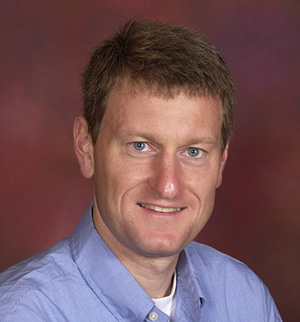
(MUNCIE) – Regular exercise over a lifetime may help mitigate the impact of aging on the human body by keeping chronic inflammation at bay, says a new study from Ball State University.
“Effects of Aging and Lifelong Aerobic Exercise on Basal and Exercise-Induced Inflammation” finds that the muscles of men in their 70s who regularly do aerobic exercises — biking or running — are better protected against the effects of aging as compared to sedentary older men.
The study also found that lifelong exercise may lead to muscles that resemble – at the cellular level – those of males in their mid-20s.

“Exercise training may positively impact muscle health throughout aging by controlling inflammation of the skeletal muscle, cutting its effects on muscle mass by about half in folks who are lifelong exercisers,” said Todd Trappe, a Ball State exercise science professor. He is part of a Human Performance Laboratory (HPL) research team that has been studying the effects of exercise on aging.
The study was posted online on November 21 by the Journal of Applied Physiology. A study looking at how chronic inflammation is reduced through regular exercise by women will be released in the coming months by HPL researchers.
Trappe noted that chronic low-grade inflammation throughout aging threatens functional capacity, independence, and quality of life in older individuals. Inflammation has also been associated with sarcopenia (loss of muscle tissue), muscle atrophy, and accompanying functional deficits in older adults.
“As we age, the typical person loses muscle, making him or her weaker and more prone to various types of diseases and more susceptible to the injuries caused by falling,” Trappe said. “These lifelong exercisers look and feel years younger than males their own age who are healthy but don’t regularly exercise.”
For the study, the HPL research team analyzed 21 older lifelong exercisers (LLEs) with an average age of 74, 10 healthy non-exercisers with an average age 75, and 10 exercisers with an average age of 25.
The men’s exercise history was evaluated, using a comprehensive questionnaire and confirmed through personal interviews. The LLE group consisted primarily of cyclists and runners who reported about 50 years of structured activity. The exercise history of LLE subjects was extensively reviewed for frequency, duration, intensity, and athletic achievements.
The study also noted that two clear LLE subgroups emerged: one group that participated in lower intensity training for physical fitness and another group that trained more vigorously and often participated in competitive events.
“These lifelong exercisers have been working out five days a week for a total of seven hours for decades,” Trappe said. “As a result of their exercise regimen, these men have been able to keep muscle inflammation at a lower level — but not completely eliminated — as compared to their sedentary counterparts.”
The study also found that when exposed to a bout of resistance exercise, the LLE group triggered inflammation to about the same level as those five decades younger.
“Since the group trained with aerobic exercise, we switched them up to a session of resistance exercise and found that the LLE group responded with a less overall inflammatory response, which typically leads to the common feeling of soreness, than other men their age,” Trappe said. “We’ve all done physical things we aren’t accustomed to, like raking leaves in the yard during a weekend. Most of us will feel some sort of soreness for a few days.
“We were surprised by how well the aerobically trained LLE group was protected as a result of exercising for decades. Again, it shows us the benefits of staying physically active.”
Learn more about HPL here.



